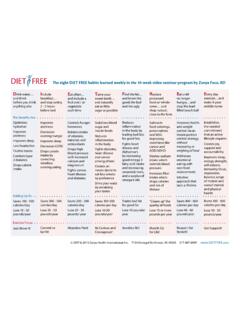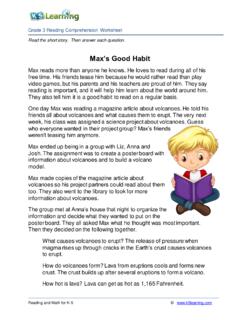Transcription of Eastern Red-cedar - NDSU Agriculture and Extension
1 Eastern Red-cedar slide 84a 400% slide 84b 360%. slide 84c slide 84d 390%. 360%. III-173. Cold Hardiness Eastern Red-cedar USDA Zone 2. (Juniperus virginiana) Water Drought tolerant, but prefers moist soils. General Description Light A small tree with a short trunk and irregular, pyramidal Full sun. Tolerates shade only in youth. crown native to the Eastern United States. Dwarf or compact forms of this juniper are used as ornamentals. Uses The largest tree in North Dakota is 51 feet tall with a canopy spread of 30 feet. Conservation/Windbreaks Small to medium evergreen for farmstead and field Leaves and Buds windbreaks. Bud Arrangement - Continuous. Bud Color - Same as leaves, hard to distinguish from Wildlife leaves. Fruit matures in one season. Provides food for birds and Bud Size - 1/8 inch.
2 Mammals. Nesting and winter cover for a variety of birds. Browse for whitetail deer. Leaf Type and Shape - Simple scale and awl-like leaves. Leaf Margins - Sawtooth serrations Agroforestry Products Leaf Surface - Prickly. Wood - Used for fence posts, cedar chests, pencils, and Leaf Length - Variable lengths, indeterminate growth, medicines. Heartwood is decay resistant. juvenile leaves in pairs 1/5 to 1/4 inch, ending in a spiny Food - Berry-like cones used in alcohol products. point. Medicinal - Native Americans used for coughs, head colds Leaf Width - 1/16 inch. and dysentery. Leaf Color - Concave and glaucous above, green and convex below. Urban/Recreational Good for ornamental landscaping. The species, as well Flowers and Fruits as most cultivars, turn brown in the winter. Flower Type - Unisexual, usually dioecious.
3 Flower Color - Female, green; male, yellow-brown. Cultivated Varieties Fruit Type - Cones, globose or ovoid, and deeply pitted, Canaert Red-cedar (Juniperus virginiana Canaertii') - typical juniper berry , mature in one year; 1 to 3 ovate Dense, tufty, green colored selection. One of few cultivars seeds. to retain summer color in winter. Fruit Color - Shiny brown seeds in dark blue, berry-like Taylor Juniper (J. virginiana Taylor') - A new cultivar from cones with heavy glaucous coating. Nebraska with a very narrow, erect growth habit of interest for landscape use. Form Growth Habit - Fairly dense pyramidal when young, Related Species much more open to slightly pendulous when mature. Rocky Mountain juniper (J. scopulorum). Texture - Medium, summer and winter. Crown Height - 30 to 45 feet.
4 Pests Crown Width - 15 to 30 feet. Common diseases include cedar -apple rust (Gymno- sporangium) and Kabatina tip blight. Common insect Bark Color - Gray-brown, exfoliating in long strips. pests include spider mites. Red cedars should not be Root System - Deep, penetrating taproot. planted near apple, crabapple, juneberries, or hawthorns due to increased risk of damage by Gymnosporangium Environmental Requirements rusts. cedar oil extract of Juniperus species has been effective control of clothes moths. Soils Soil Texture - Moist, deep loam to sand. Soil pH - to Will tolerate alkaline and saline conditions. Windbreak Suitability Group - 1, 1K, 3, 4, 4C, 5, 6D, 6G, 7, 8, 9C, 9L. III-174.














